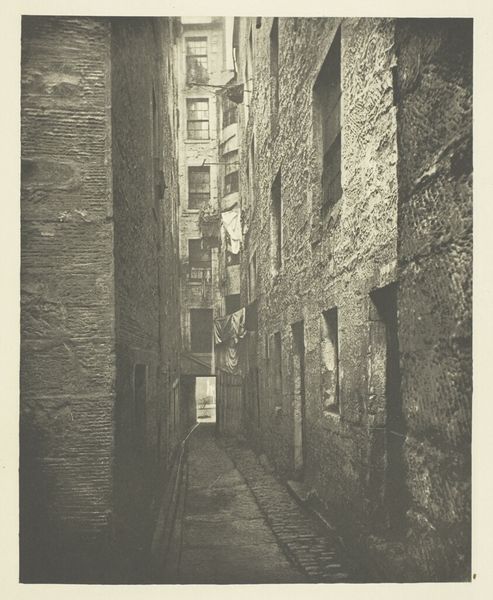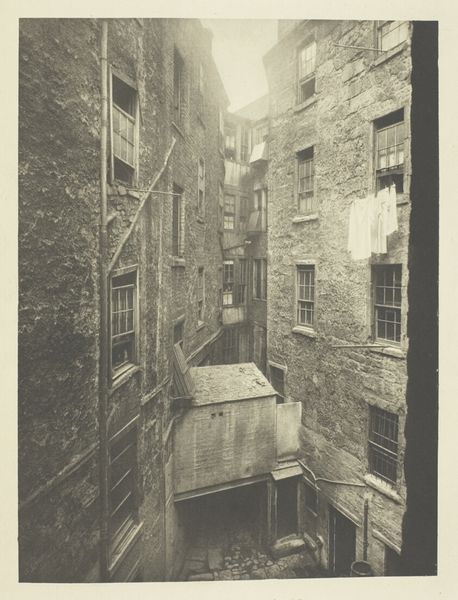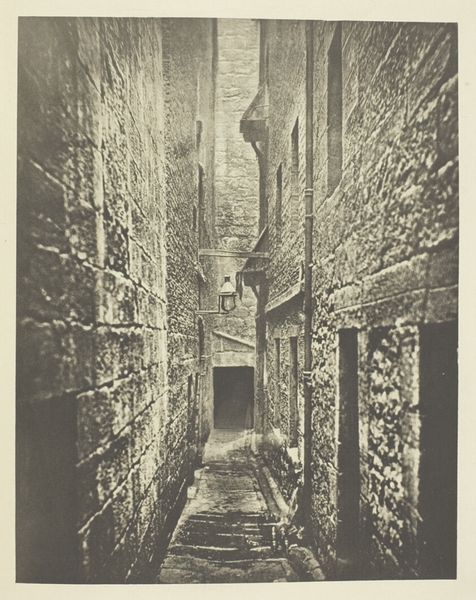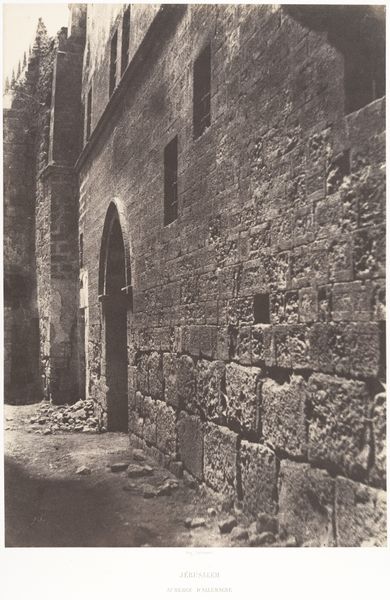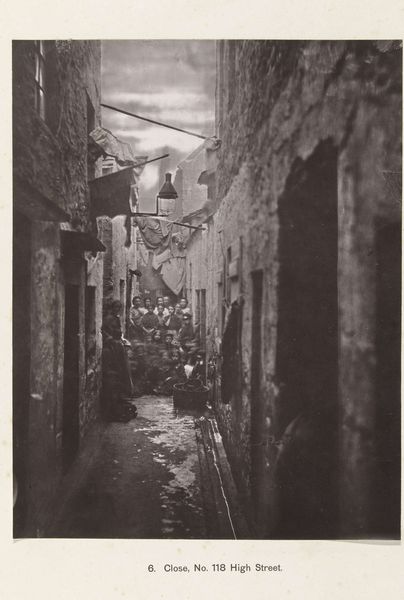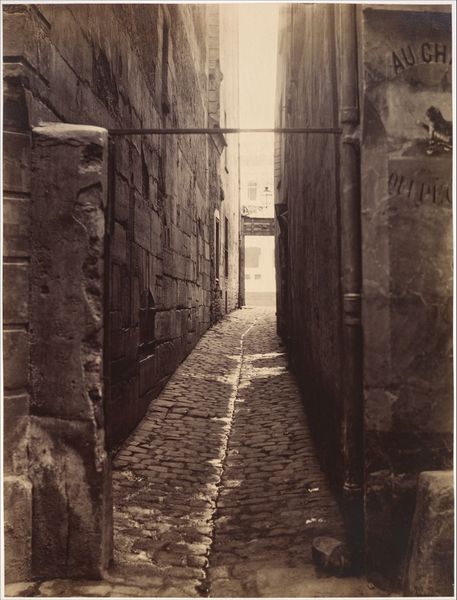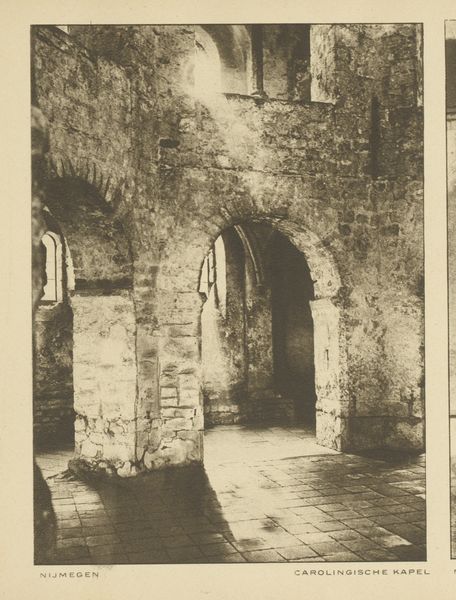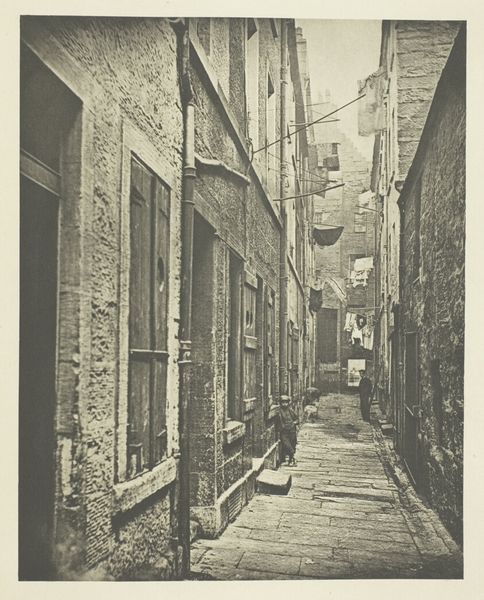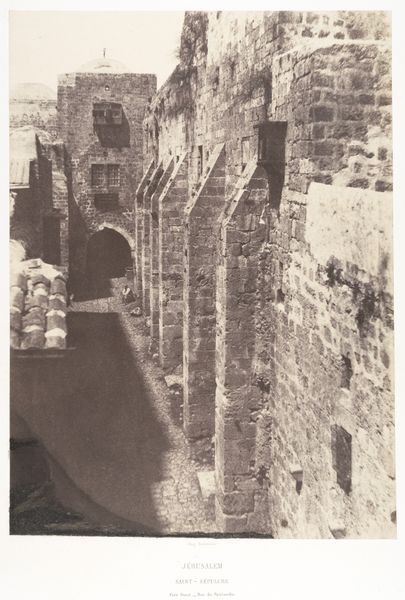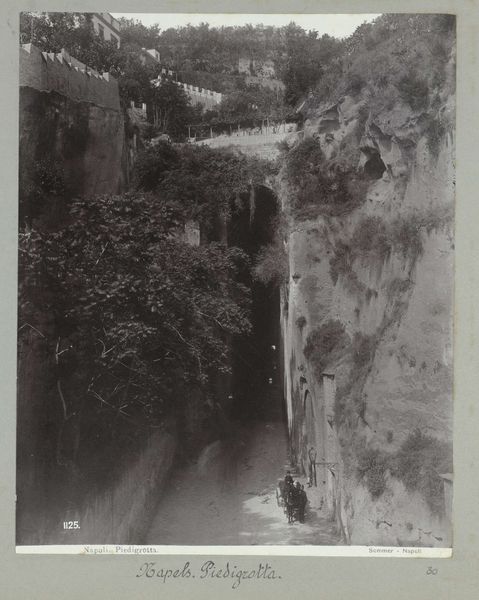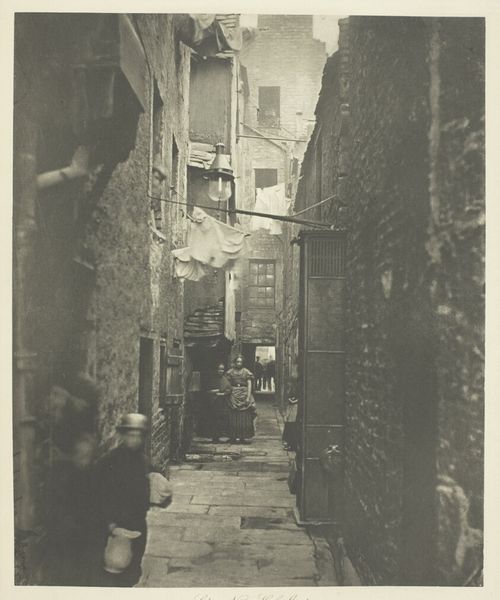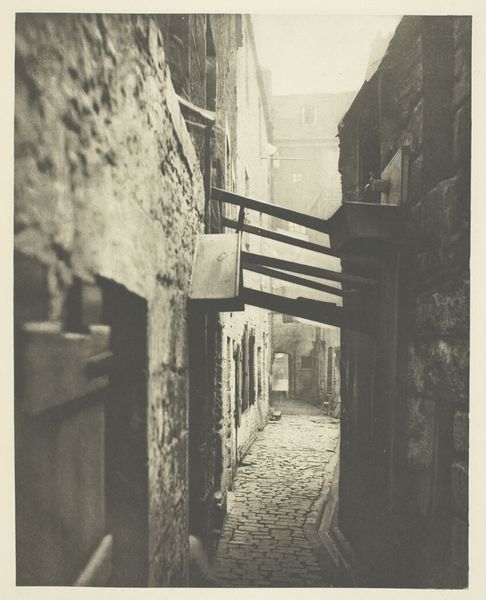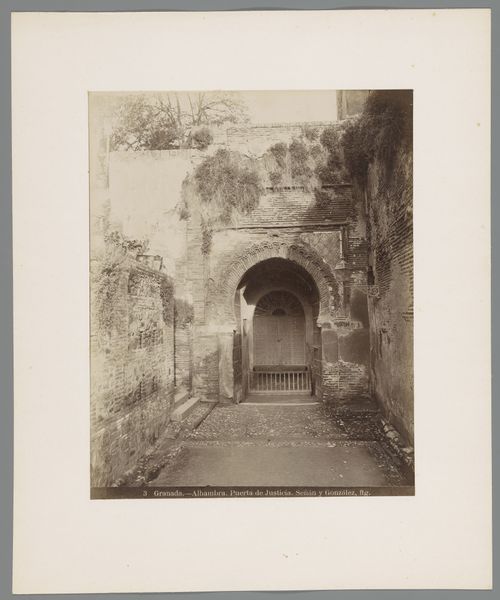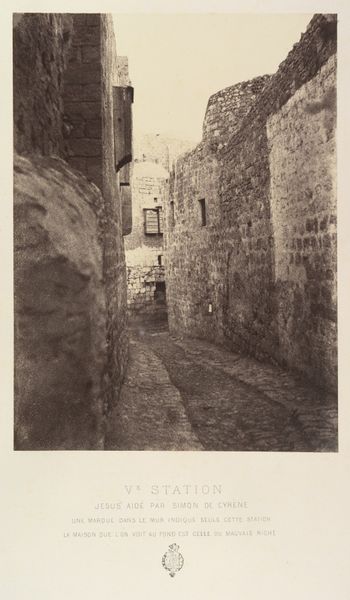
photography, gelatin-silver-print
#
social-realism
#
street-photography
#
photography
#
gelatin-silver-print
#
19th century
#
cityscape
Dimensions: height 290 mm, width 238 mm, height 438 mm, width 310 mm
Copyright: Rijks Museum: Open Domain
Thomas Annan created this photograph, "The Slums of Glasgow," using the wet collodion process. The photograph captures a narrow, claustrophobic alleyway, dominated by the towering presence of stone buildings on either side. The rough texture of the stone is vividly rendered through Annan’s sharp focus and tonal range. This material quality evokes the harsh realities of urban poverty. The composition leads the eye down the alley, with the converging lines creating a sense of depth, albeit one that feels oppressive rather than expansive. The single light source at the end of the alley draws the viewer toward it, but the overall feeling is one of entrapment. Annan uses photography as a tool to expose the social conditions of the time, turning the visual aesthetic into a commentary on urban decay and social inequality. The photograph functions as a social document. It invites us to consider the relationship between the built environment and the lives of its inhabitants.
Comments
rijksmuseum about 2 years ago
⋮
In 1866 Annan purchased for Scotland the patent rights to Joseph Swan’s permanent carbon process to improve the photographic art reproductions he specialized in. As it turned out, his fame rests on the series of slums and alleys of Glasgow that he documented on commission from the Glasgow City Improvement Trust as of 1868. In 1877 he printed 60 sets (of the series of 40 photographs) as carbon prints.
Join the conversation
Join millions of artists and users on Artera today and experience the ultimate creative platform.
